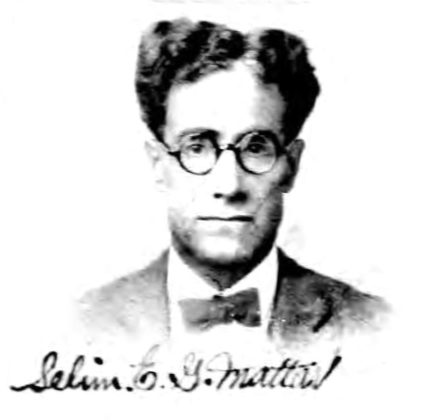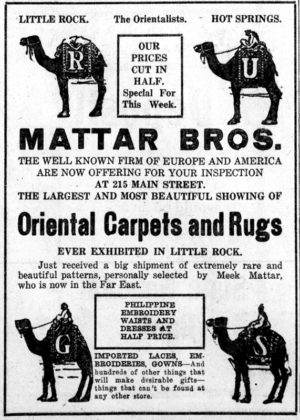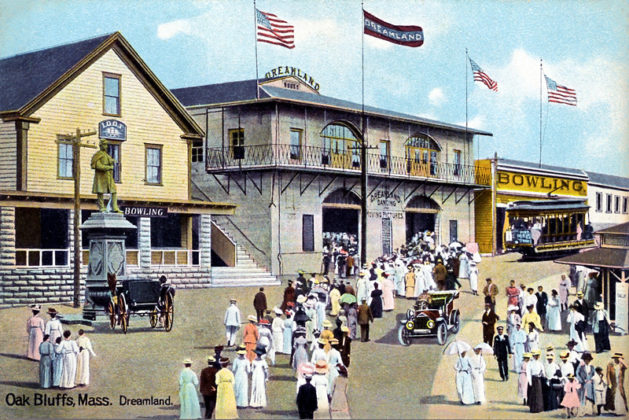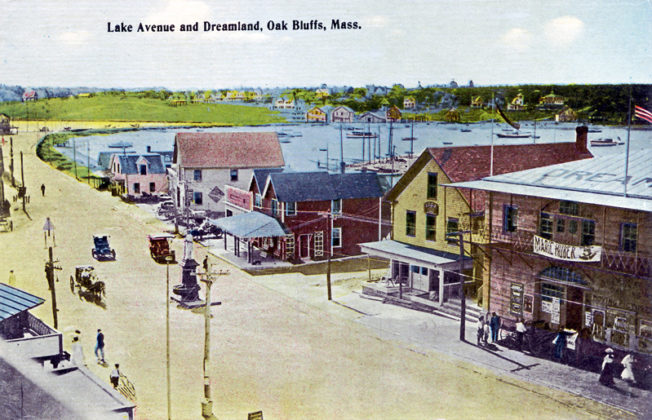Brothers Selim and Meek Mattar immigrated to the U.S. as teenagers, about 1890. They were natives of the city of Beirut, then part of the Ottoman Empire, and today the capital of Lebanon, but the Mattar brothers always referred to their birthplace as “Syria” — a term once used for all the Mediterranean lands stretching from Turkey to Egypt. Similarly, the records state that their native tongue was Syrian, presumably a dialect of Arabic. Why the Mattars chose to settle in Hot Springs, Ark., is a mystery, but they soon became successful dealers in “oriental goods” — rugs and other textiles. Selim became a naturalized U.S. citizen in 1902.
Why they soon began to spend time on Martha’s Vineyard is equally curious. The brothers first show up in Island records about 1904, when they began buying property in Cottage City. This was the same year millionaire Charles Whitney built his red-roofed villa known as Hedge Lee in Vineyard Haven, and on Selim’s 1905 passport application, filed from the Vineyard, Whitney signed a statement attesting that he had known Selim for 12 years. So perhaps it was through this connection that these two enterprising Syrian brothers came to Oak Bluffs.
In November 1905, U.S. passport in hand, Selim left the Island for Beirut to visit his mother. But upon arriving at the border, he discovered that due to a recent attempt on the life of a Turkish sultan, all foreigners had been banned from entering the Turkish dominion, which included Selim’s native city. So Selim exercised his only option: He surrendered his new passport and entered as a Turkish subject. Unfortunately, this also barred his return to the U.S.
Stuck, Selim appealed to the U.S. consul general at Beirut, but was met with little sympathy. The U.S. State Department ruled that he had abandoned his American citizenship and was no longer entitled to the rights of a U.S. citizen. His records were marked “Renounced American Allegiance” and “Passport Destroyed.”
How he made it back to the Vineyard after that is a mystery. (When he successfully reapplied for a new U.S. passport almost 20 years later, he simply claimed he “lost” his first one.)
In 1907, the Mattar brothers purchased a lot on Oak Bluffs Avenue and proceeded to build the largest concrete structure in town, a two-story building they named Dreamland. It was a movie theater (first floor) and dance hall (second floor), and was a popular nightspot into the 1920s. It predated all three of the other well-known Island theaters (the Island, Strand, and Capawock). It attracted magicians, dance professors, and auctioneers, and was remembered for the brilliant electric light displays on its exterior and roof.
Selim and Meek split their time between Oak Bluffs and Hot Springs, running businesses and managing properties in both. Soon, they had branch stores in New York City and Louisville, Ky., as well.
In March 1913, a leaking natural gas pipe in the basement of their Hot Springs rug shop caught a spark. The resulting explosion killed two men, injured many more, and Selim himself was blown through the storefront. He grabbed a burning timber to keep himself from falling into the basement, but his hands were burned “to the bone.” He soon recovered, but bore visible scars on both hands for the rest of his life.
Meek had become chronically ill — probably tuberculosis — and spent years unsuccessfully trying to regain his health. He died in 1914, and is buried in Oak Bluffs’ Oak Grove Cemetery.
Undeterred, Selim began expanding his holdings in Oak Bluffs. In 1917, he built a building on the corner of Pasque and Sea View Avenue — today occupied by the Lookout Tavern — as a meeting hall for the Odd Fellows, a popular Vineyard fraternal organization. After the lodge eventually closed, Mattar continued to sell “oriental goods” and artwork from this building for many years.
Selim also owned and ran the Original Oriental Palace of Art on Circuit Avenue, where Linda Jean’s is today, modeled after his Hot Springs store. Here he sold imported carpets and “fancy goods,” and maintained an auction house in the evenings.
In 1920, Mattar sold the Dreamland building to Michael Keegan (who ran the Pastime, Strand, and Capawock theaters.) But by 1924, the downstairs was converted into the Dreamland Garage, offering winter automobile storage for up to 50 cars, and also providing used cars, rental cars, gasoline, and repair service. The garage was run by Barbados native Cooper Gilkes, and later by Island Transport.
Throughout the 1920s, Dreamland’s second floor was still used for events. By 1925, Oak Bluffs High School’s basketball team used the upstairs — renamed Noepe Hall — for basketball games. In 1928, “more than a thousand spectators” reportedly showed up for a boxing match run by the Antler’s Club at what was now called Dreamland Rink. Edgartown native George Salvadore’s knockout win over Johnny Mello at Dreamland Rink one night launched a boxing career that would eventually lead to his title as the world’s third-ranking welterweight boxer.
Selim and his wife maintained a summer home on Seaview Avenue until their deaths. Their children became art dealers and auctioneers in Arkansas and North Carolina. His building on Oak Bluffs Avenue is still known by its original name: Dreamland.
Chris Baer teaches photography and graphics at Martha’s Vineyard Regional High School. His book, “Martha’s Vineyard Tales,” containing many “This Was Then” columns, was released in 2018.











